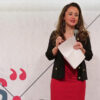One of the tough challenges for any executive is leading through volatile, uncertain, complex, and ambiguous (VUCA) times, like the ones we are going through today.
In my 17 years leading ArabiaGIS since the day of its inception all through its regional growth, VUCA was the norm ArabiaGIS operated under.
Wars, volatile safety conditions, economic instability, local and global competition, the fast-changing tech industry, and a country suffering from brain drain were only a few of the challenges we had to face.
Despite all of this, our teams continuously exhibited extraordinarily:
– ownership
– innovation
– self-direction
– collaboration
– and a high tolerance for working in vague areas
These qualities were key for the the organization to thrive through the odds.
When I reflect on this, I recognize that what made this possible was a culture that supported its people and allowed each one to tap into the best version of themselves.
Following is not an extensive description of the culture but rather a glimpse of what worked.
How we envisioned the future?
We sensed the vision collectively; We had formal and non-formal discussions, brainstorming sessions, and even night calls that contributed to shaping the vision. The result was a perception of the future that excited us all and that we co-owned.
How was power distributed?
We did have a hierarchy, but the lines of the authority blurred the minute we started engaging in a big project or a new initiative. Power, coupled with accountability, was there to be claimed by anyone who was up to a good challenge.
What we valued and rewarded?
We valued growth, curiosity, commitment to excellence, and team spirit. We believed that for the company to grow and to sustain growth, people needed to grow as individuals. Curiosity was welcomed, and people had the space to explore, failure was part of the learning. Yet, anything less than one’s best available output was considered mediocre. Contributing to the well-being and growth of the team was a requirement for career development that technical competencies didn’t compensate for.
How did the corporate environment feel?
It was safe, supportive, and fun. It was safe to make mistakes, to be who you are, and to have big ambitions. You were seen and appreciated, and you could trust being rewarded for your effort. An unhealthy internal competition was addressed firmly. People worked hard but did it with joy. There was a comradeship felt on all levels. And yes, we were not the best example of work-life balance, but we were driven; we did it out of joy and not an obligation.
How we showed up every day?
We did our best to be responsible and conscious human beings in all our interactions internally and externally, with each other and with all our stakeholders. Difficult and honest conversations were frequent; we did it with compassion and genuine interest in the growth of everyone and, thus, the organization.
How we got the job done, including large projects?
Agile: one iteration at a time, it started as a methodology to manage our software development projects and ended up to be our approach to navigating through uncertainty. It allowed us to move forward as an organization even when we couldn’t see the final destination.
What did we gossip about in the kitchen?
New projects, new ideas for products, a new client that we were excited to have or not, were what spiced up our kitchen conversations. Office gossip that eats up the energy in other organizations seemed lame.

